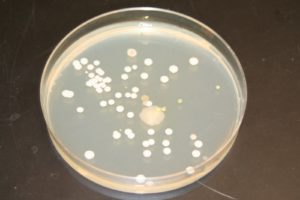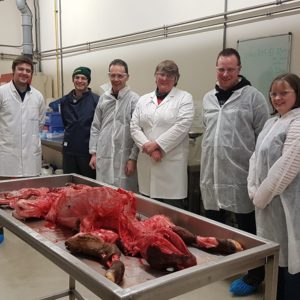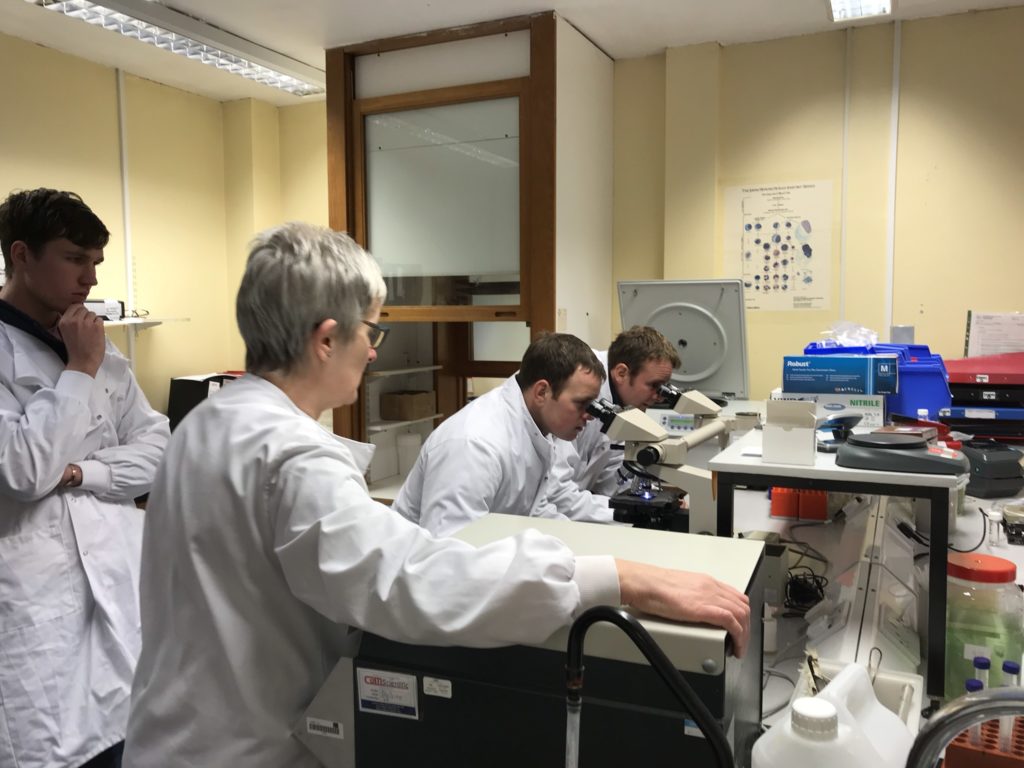New Entrants to Farming: The Importance of the Vet Lab & Disease Surveillance (Morayshire) Event Summary
7 February 2018 New Entrants to Farming from Morayshire recently attended an informative, hands on workshop on the importance of the vet labs and disease surveillance at the SAC Veterinary Services Centre at Craibstone, Aberdeen.
New Entrants to Farming from Morayshire recently attended an informative, hands on workshop on the importance of the vet labs and disease surveillance at the SAC Veterinary Services Centre at Craibstone, Aberdeen.
Tim Geraghty, the Veterinary Centre manager, began the meeting with an overview of the work carried out by SAC Vet Services. Tim explained the causes of some topical issues at this time of year, such as pneumonia, and how best to manage and prevent outbreaks. He also talked through the most common ailments which are picked up in post mortems of farm animals, described how investigative post mortem work is funded by the Scottish Government and also how the team deal with any suspected new diseases.
The new entrants were then split into two smaller groups, everyone was then provided with protective clothing and given a tour of the Craibstone Veterinary Centre. Each group visited the following stations:
Vet Lab
Hannah Orr, one of the SAC Veterinary Investigation Officer, discussed and showed us how bacteria etc. is cultured on specific agar plates, and also how they can test for any antibiotic resistance and then record all of the findings onto the computer. Hannah also went through the process of worm egg counts and showed the group examples of different internal parasites found in cattle and sheep.
Post Mortem (PM) Room
 Tim carried out a post mortem demonstration on a calf that had been taken into the centre earlier that day. He talked through each step of the process and what they are looking for and what things they would analyse further if required. The PM room houses a hoist system which allows the centre to PM animal up to 1.5 tonnes in weight.
Tim carried out a post mortem demonstration on a calf that had been taken into the centre earlier that day. He talked through each step of the process and what they are looking for and what things they would analyse further if required. The PM room houses a hoist system which allows the centre to PM animal up to 1.5 tonnes in weight.
This was a really informative meeting that gave the group a useful insight into how the cause of conditions are investigated and diagnosed at the vet lab and that it is a worthwhile process to ensure overall herd/flock health on-farm.
Take home messages included:
- Your farm vet should be your first point of contact to discuss any concerns or issues you have.
- Testing to diagnose problems such as Johne’s in live animals can be difficult and become very costly.
- Post mortem examination is a more effective way to diagnose/rule out a range of conditions or deficiencies.
- Ideally, bring poor-doing animals to the lab alive to allow them to be visually assessed before being euthanised and PM’d.
- Where an animal has died, particularly from an unknown cause, submit it to the lab for PM as soon as possible. Ideally animals should be submitted within 24 – 48 hours to allow the vets to carry out investigations on fresh animals.
- In abortion/still birth cases, take the placenta for PM too, if possible, as this can aid diagnosis.
- Answers are not always obvious from a PM but a negative diagnosis is still a positive!
Sign up to the FAS newsletter
Receive updates on news, events and publications from Scotland’s Farm Advisory Service

